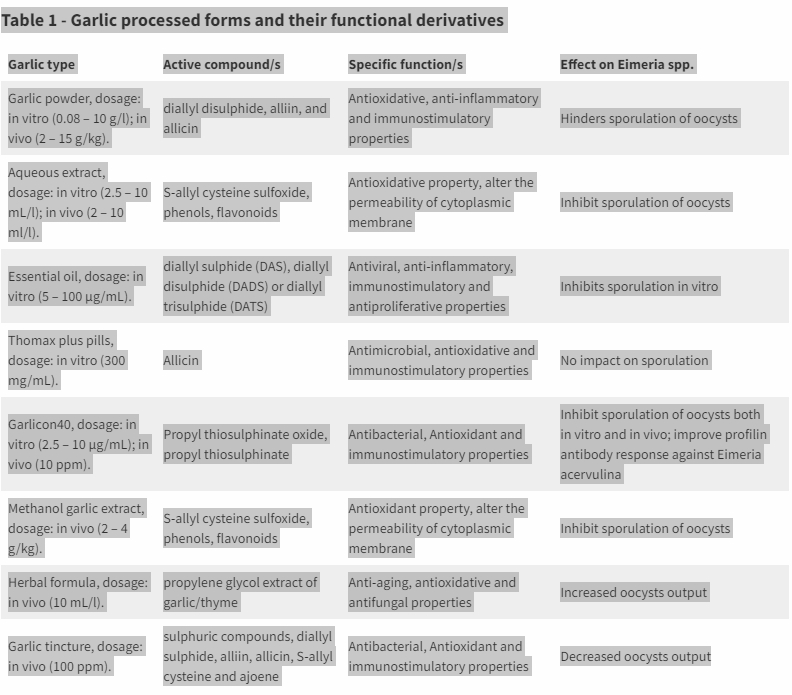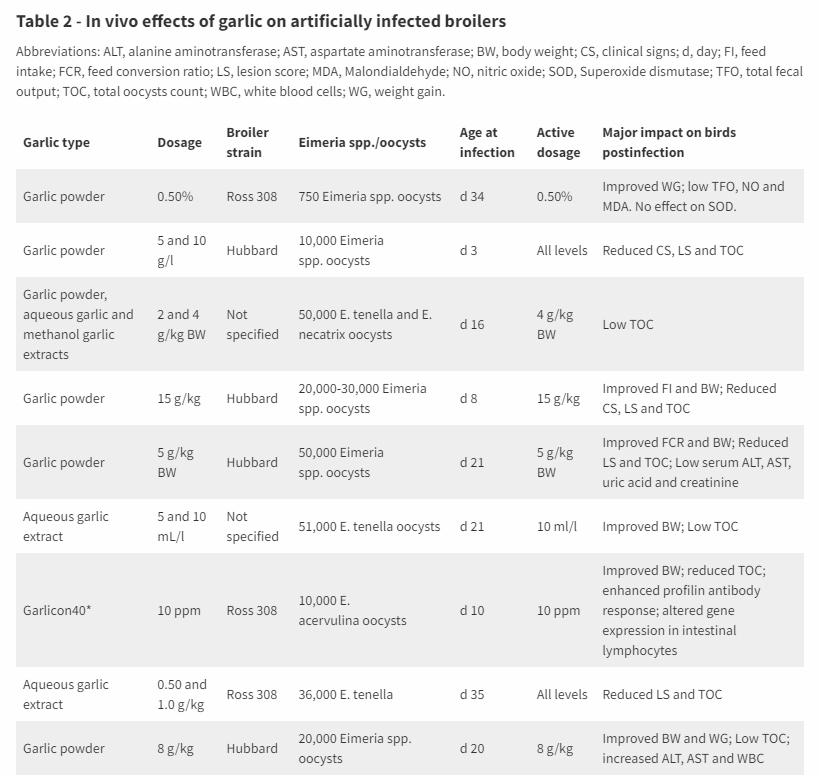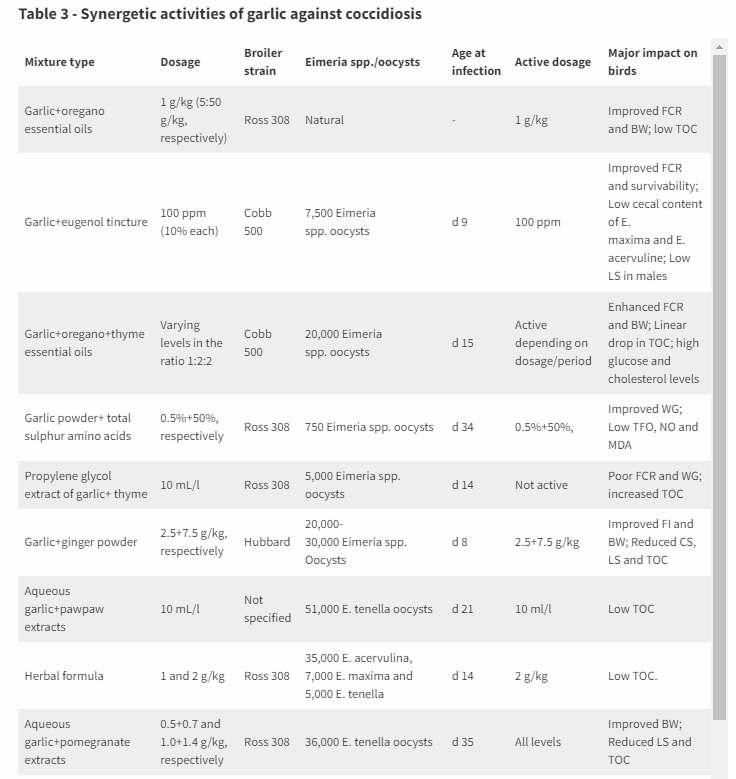June 15, 2025 | 07:53 GMT +7
June 15, 2025 | 07:53 GMT +7
Hotline: 0913.378.918
June 15, 2025 | 07:53 GMT +7
Hotline: 0913.378.918
The protozoan parasites of Eimeria spp. penetrate and propagate in the epithelial cells found on the surface of the small intestines of chickens. While subclinical symptoms of coccidiosis manifest in the deterioration of the mucosal barrier and result in poor growth performance, clinical symptoms may extend to widespread consequences like haemorrhage and death. Major economic losses also, therefore, result due to poor performance, increased mortality, and low absorption of digestible nutrients. And so, the search for alternatives for the prevention and treatment of coccidiosis continues.
The defensive and therapeutic potential of garlic
Phytogenic extracts have been reported to possess defensive and therapeutic potential against artificially induced coccidiosis in chickens, and garlic, over many millennia, has been used as a curative plant. The authors of this study* have summarised the potential effects of garlic on broiler chickens artificially challenged with Eimeria spp. in Table 1.

The researchers determined that different proportions of garlic products administered improve growth performance and decrease faecal oocysts output, lesion score, and pathological signs post-infection. Their results are shown in Table 2 below.

Oxidatie stress
Coccidial infection in birds stimulates high concentrations of serum nitric oxide (NO) and Malondialdehyde (MDA) due to oxidative stress. These elevated levels of oxidative stress markers could be associated with the improved immune cell activity that results in the excessive production of free radicals.
Interestingly, the researchers noted that supplementation of garlic powder in the diets of coccidiosis-challenged birds showed a positive reduction in serum NO and MDA but did not influence the antioxidant enzyme, superoxide dismutase. This suggests that garlic has the potential to reduce oxidative stress in infected birds.
Synergetic activities of garlic against coccidiosis
The researchers also considered the potential of garlic combined with other chemicals and phytogenics against coccidiosis. These results can be seen below in Table 3. Various blends of herbs, including garlic, thyme, oregano, eugenol, pawpaw and pomegranate extracts, and essential oils, have been tested on coccidiosis-infected birds. The disparity in the results could be due to the levels of inclusion of each herb and the concentrations of bioactive components available in the mixtures.

In conclusion…
In conclusion, while high levels of garlic can cause liver damage in chicks, the research team confirms that supplementing garlic in coccidiosis-infected broiler chickens improves weight gain and feed efficiency, and decreases pathological signs, faecal oocysts output and lesion score post-infection.
(PW)

(VAN) Extensive licensing requirements raise concerns about intellectual property theft.

(VAN) As of Friday, a salmonella outbreak linked to a California egg producer had sickened at least 79 people. Of the infected people, 21 hospitalizations were reported, U.S. health officials said.

(VAN) With the war ongoing, many Ukrainian farmers and rural farming families face limited access to their land due to mines and lack the financial resources to purchase needed agricultural inputs.

(VAN) Vikas Rambal has quietly built a $5 billion business empire in manufacturing, property and solar, and catapulted onto the Rich List.

(VAN) Available cropland now at less than five percent, according to latest geospatial assessment from FAO and UNOSAT.

(VAN) Alt Carbon has raised $12 million in a seed round as it plans to scale its carbon dioxide removal work in the South Asian nation.

(VAN) Attempts to bring down the price of the Japanese staple have had little effect amid a cost-of-living crisis.